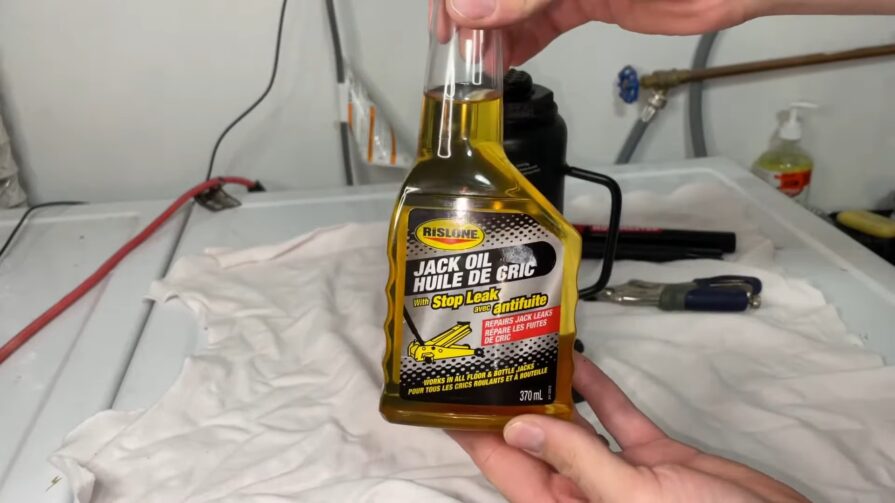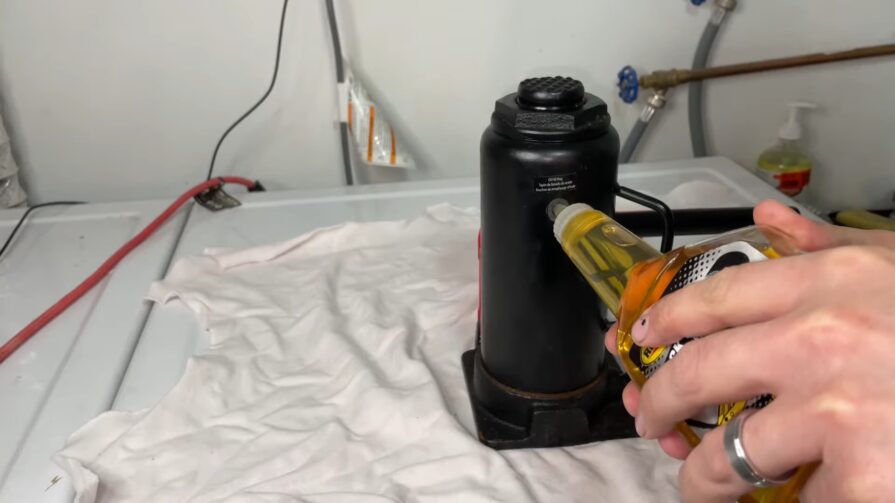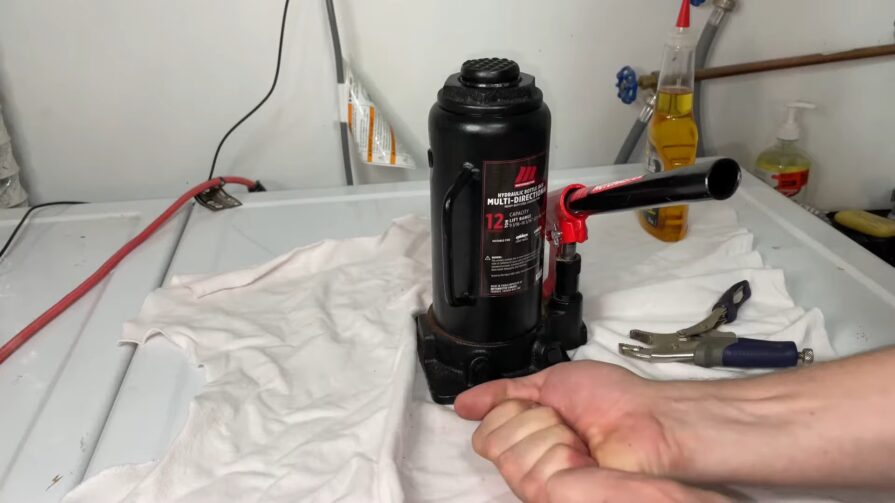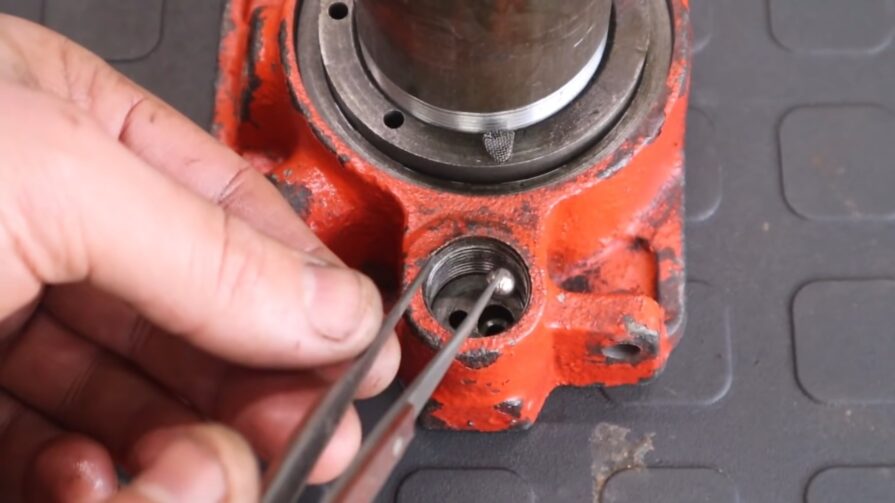December 19, 2023
A bottle jack, named for its bottle-like shape, is a hydraulic device used to lift heavy loads. It operates using hydraulic pressure, generated by forcing fluid from one chamber into another, creating the lift. Regular maintenance, including oil refilling, is vital for its longevity and performance.
Importance of Regular Maintenance
Regular maintenance, including oil checks and refills, is crucial. It prevents malfunctions, extends the jack’s lifespan, and ensures safety. Neglecting maintenance can lead to reduced efficiency, potential failure, and safety hazards.
Identifying the Right Oil

The type of oil used in a bottle jack is critical. Manufacturers usually recommend specific hydraulic oils. Using the wrong type can damage the seals and affect performance. It’s essential to consult the user manual or manufacturer for the appropriate oil type.
Tools and Materials Needed
Before starting, gather the necessary tools and materials. This typically includes the correct hydraulic oil, a clean funnel, a rag, and possibly a screwdriver or wrench, depending on the jack’s design.
Preparing the Bottle Jack
Preparation involves ensuring the jack is clean and free of debris. Place it on a flat, stable surface and release any pressure by lowering the lifting mechanism. This step is vital for safety and accuracy.
The Oil Refilling Process

The oil refilling process involves several steps. First, locate the oil filler plug, which is usually marked and found on the jack’s body. Remove this plug carefully. Using the funnel, slowly add the hydraulic oil to the reservoir, taking care not to overfill. Overfilling can cause performance issues and leaks.
Checking Oil Levels
After adding oil, it’s essential to check the level. This might involve using a dipstick or observing a sight glass, depending on the jack’s design. The correct level is usually indicated in the user manual. Ensuring the correct oil level is critical for optimal performance.
Final Steps and Testing

Once refilled, replace the filler plug securely. It’s advisable to test the jack under a light load to ensure it’s working correctly. Look for any leaks or performance issues during this test. If the jack does not perform as expected, recheck the oil level and ensure there are no air bubbles in the system.
Troubleshooting Common Issues
Common issues after refilling oil include leaks, insufficient lifting power, or erratic operation. These can often be resolved by checking for overfilling, ensuring there are no air locks in the system, and verifying that the right type of oil has been used.
Regular Maintenance Schedule
Establishing a regular maintenance schedule for your bottle jack is crucial. This not only includes oil refills but also inspecting for any signs of wear and tear, checking for hydraulic leaks, and ensuring that all moving parts are functioning correctly. Regular maintenance can prevent sudden failures and prolong the life of the jack.
Environmental Considerations
When maintaining and refilling oil in a bottle jack, environmental considerations are important. Used hydraulic oil should be disposed of responsibly, as it can be harmful to the environment. Check local regulations for proper disposal methods. Additionally, working in a well-ventilated area is advisable, as some oils can emit fumes that are harmful if inhaled in confined spaces.
Hydraulic Systems
A deeper understanding of how hydraulic systems in bottle jacks work can be beneficial. This knowledge helps in diagnosing issues and performing maintenance more effectively. Hydraulic systems operate based on Pascal’s principle, where pressure applied to a fluid is transmitted undiminished throughout the fluid. Any issues with the hydraulic fluid, such as low levels or contamination, can significantly affect the performance of the jack.
Advanced Maintenance Tips

For those who use bottle jacks frequently or in professional settings, some advanced maintenance tips can be helpful. This includes periodically bleeding the hydraulic system to remove air pockets, checking the condition of the seals and replacing them if necessary, and occasionally cleaning the internal components of the jack, if accessible and advisable according to the manufacturer’s instructions.
Safety Precautions
Safety is paramount when working with hydraulic equipment like bottle jacks. Always ensure the jack is on a stable and level surface during use and maintenance. Never exceed the weight limit specified by the manufacturer, and always use jack stands to support the load once it has been lifted. When performing maintenance, make sure the jack is depressurized and that you’re wearing appropriate protective gear, such as gloves and safety glasses.
FAQs
Can I use motor oil or brake fluid instead of hydraulic oil for my bottle jack?
No, it’s not advisable to use motor oil or brake fluid in a bottle jack. These fluids have different properties and can damage the internal components of the jack. Always use the specific hydraulic oil recommended by the manufacturer.
How often should I change the oil in my bottle jack?
The frequency of oil changes in a bottle jack depends on usage and environmental conditions. As a general guideline, changing the oil every two to three years or after extensive use is recommended. Always refer to the manufacturer’s instructions for specific guidance.
Can air in the hydraulic system affect the bottle jack’s performance?
Yes, air in the hydraulic system can significantly impact the performance of your bottle jack. It can lead to a spongy feel in the lifting mechanism and reduced lifting capacity. Bleeding the system to remove air is an essential part of maintenance.
Is it necessary to use a funnel when adding oil to a bottle jack?
While not strictly necessary, using a funnel is highly recommended to prevent spills and ensure that the oil goes directly into the reservoir. Spills can attract dirt and debris, which can contaminate the hydraulic system.
What should I do if my bottle jack starts leaking oil after I refill it?
If your bottle jack starts leaking oil after a refill, it’s likely due to overfilling or a damaged seal. First, check the oil level and remove any excess. If the leak persists, inspect the seals and gaskets for damage and replace them if necessary.
Can I store my bottle jack with the pressure released?
Yes, it’s actually recommended to store your bottle jack with the pressure released. This helps to relieve stress on the hydraulic system and prolongs the life of the seals and other components. Always lower the lifting mechanism fully before storing the jack.
Final Notes
In conclusion, adding oil to a bottle jack is a fundamental aspect of its maintenance that ensures its effective and safe operation. Adhering to the manufacturer’s guidelines, using the correct oil, and following a regular maintenance schedule are key to the longevity and reliability of the jack. Understanding the intricacies of hydraulic systems and practicing safety precautions during maintenance can prevent accidents and extend the life of the tool. Regular maintenance is not just a routine task; it’s an investment in the efficiency and safety of your equipment.
